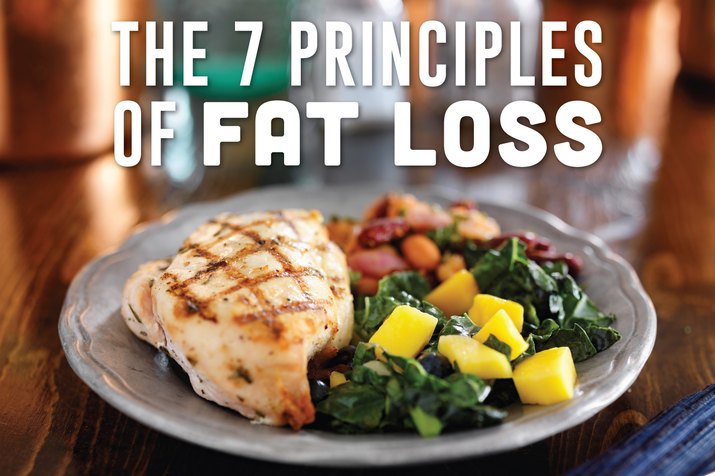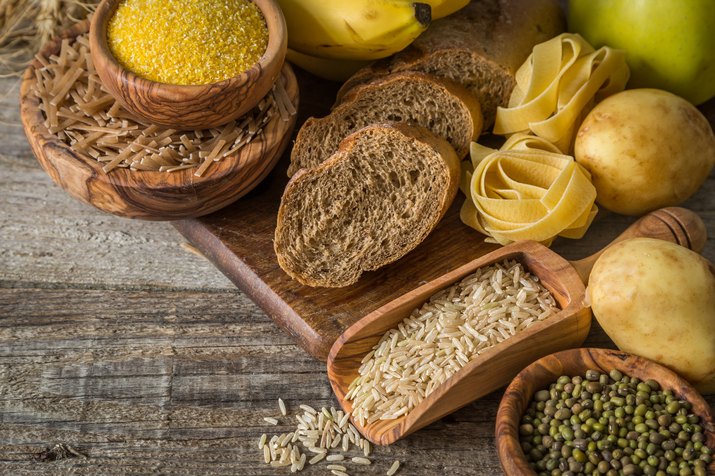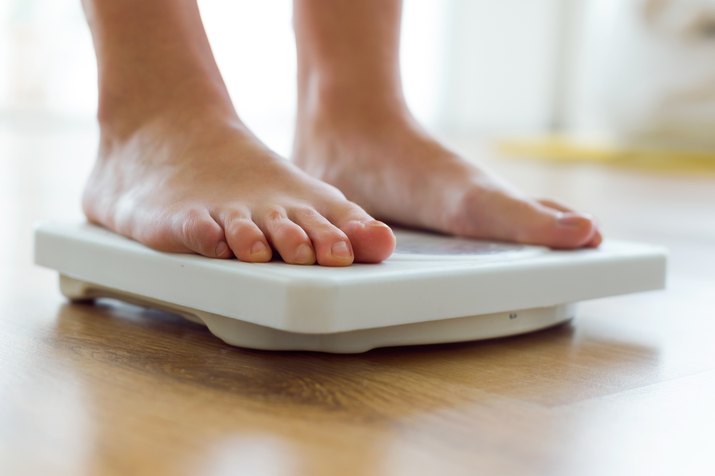
Overview
Developing your own diet and fitness fat-loss plan can feel like swimming against the current. There's so much conflicting information about the best way to lose fat that you might start to feel some analysis paralysis. Do you go low-carb or low-fat? Do you count calories or not? Should you strength train or do cardio -- and what type? How much protein do you need in a fat-loss phase? It can be exhausting for well-meaning people who want results to sift through all of this information and apply a practical, sustainable, fact-based approach. Read on to learn about the seven foundational fat-loss principles the world's leading experts use with their clients to get results.

1. Establish Your Fat-Loss Calorie Requirements
There's a reason this principle is first: If you get this wrong, you can't expect to apply the other principles and experience much success. There are different tools and formulas you can use to track them. Enter your age, weight, weight-loss goal, height and gender for your baseline calorie requirement for weight loss. If you're active or exercise regularly, your calorie needs will increase. Holly Mitchell, a nutrition coach with Lean Bodies Consulting, cautions against dropping calories too low too fast. "The goal is to see how much you can eat and still lose fat, not how little. If you start out with too large of a caloric deficit and plateau, you'll have nowhere to go," she says.

2. Consume Plenty of Protein
Protein is a critical component of an effective fat-loss plan, as it increases satiety and preserves muscle when losing weight. "Try incorporating eggs into your breakfast and yogurt and nut butters into your snacks," says registered dietitian Kelly Plowe. "And aim to include lean proteins like chicken, fish and beans at lunch and dinner." A 2013 study found that calorie-deficit diets two to three times the recommended daily allowance of protein helped people lose more weight. Mike Roussell, Ph.D., a private nutrition consultant recommends spreading your protein intake evenly across your meals while also having a fast-digesting form (e.g., protein shake) immediately after exercise.

3. Don’t Fear Carbs
You need not fear carbohydrates because they can help you get more out of your workouts. Mike Roussell, Ph.D., a private nutrition consultant and Shape magazine's "Diet Doctor," feels carbohydrates are essential for hard-training individuals. "Eating carbohydrates before or drinking them during training can help you fight fatigue, work harder and burn more fat," says Roussell. He also points out the importance of post-workout carb consumption because "carbohydrates eaten after you exercise will be preferentially shuttled towards your muscles so that they are refueled for your next training session."

4. Don’t Attempt to Out-Train a Bad Diet
Trying to exercise off body fat is analogous to trying to drive a nail into a board with a screwdriver. You might get the nail in a little bit, but it's far more efficient to use a hammer. In the case of fat loss, proper nutrition is the hammer. Exercising seven days a week for an hour for the average person will burn about 3,000 calories. That's less than a pound of fat. And that's a serious time commitment. On the other hand, how much time does it take to not eat those extra 3,000 calories? None. Use a combination of exercise and a good diet to enhance fitness and retain lean muscle mass while losing weight.

5. Prioritize Strength Training
Retaining lean muscle tissue is key when in a calorie deficit, and the best way to do that is by prioritizing strength training. Tony Gentilcore, co-founder of Cressey Performance in Hudson, Mass., says one of the biggest mistakes people make when following a fat-loss plan is underestimating the value of strength training. "The goal should be to maintain as much muscle as possible," he says. "Adding in more and more training volume, whether it be more cardio or higher-rep resistance training, especially in a caloric deficit, is a great way to lose muscle." The solution? Gentilcore advises implementing traditional strength work into the mix: heavier loads for five to eight reps per set.
Read more: 13 Benefits of Weightlifting That No One Tells You About

6. Keep Your Food Choices Simple
Variety may be the spice of life, but when it comes to fat loss, too much can be counterproductive. Optimal fat loss requires quantification -- particularly regarding calories. Incorporating too many foods into your diet can make this quantification tedious, frustrating, impractical and time-consuming. Pick four to five sources of protein, fat and starch and build your fat-loss diet around those. This keeps grocery shopping, quantification and meal prep simple. Attempting to incorporate several dozen foods and complex recipes will likely make it difficult to stay on track, and you'll be spending endless hours in the kitchen. Keep it simple at first. Once you start to develop a routine, you can begin to add in new type of proteins, carbohydrates and fat.

7. Don’t Buy Into Supplement Hype
As much as you might want to believe a magic potion will melt away your fat, the vast majority of supplements marketed for fat loss are ineffective. "Many fat-loss supplements have great evidence in animal models, but don't do so well in human studies," says Kamel Patel, Ph.D., director of Examine.com. What's more, human studies are often poorly designed and funded by the supplement manufacturer itself. Patel also points out that even supplements that have a minor positive effect burn far fewer calories than a few minutes of exercise, and they can have adverse side effects like insomnia and jitters. Lastly, the supplement industry is loosely regulated, so claims are often made without sufficient substantiation or regulation.

What Do YOU Think?
Are you currently trying to cut down on your body fat? If so, are you following any of these seven principles? Are they working for you? If you're struggling to lose fat or have struggled in the past, what will you do differently going forward? If you've had success losing fat and keeping it off, is there anything you would add to this list? Sound off in the comments section below and share your experiences, thoughts and opinions!
Video of the Day
Advertisement
Video of the Day
- Effects of high-protein diets on fat-free mass and muscle protein synthesis following weight loss: a randomized controlled trial
- The use of carbohydrates during exercise as an ergogenic aid.
- The effect of physical activity on weight loss
- Effects of resistance or aerobic exercise training on total and regional body composition in sedentary overweight middle-aged adults.
- Twelve weeks of moderate aerobic exercise without dietary intervention or weight loss does not affect 24-h energy expenditure in lean and obese adolescents